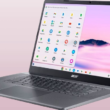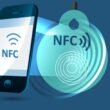History of NFC Technology
Near Field Communication (NFC) technology has its roots in Radio Frequency Identification (RFID), which dates back to the 1940s. The development of RFID technology laid the groundwork for NFC. In the early 2000s, major technology companies such as Sony and NXP Semiconductors began collaborating to refine NFC technology, leading to the creation of the NFC Forum in 2004. This organization aimed to standardize NFC technology and promote its use across various applications. By 2006, the first NFC-enabled phones were released, and the technology has continued to evolve, becoming increasingly integrated into smartphones, payment systems, and various IoT devices.
How NFC Technology Works
NFC is a short-range wireless communication technology that enables the exchange of data between devices when they are brought within close proximity, typically less than 10 centimeters (about 4 inches). It operates at a frequency of 13.56 MHz and can transfer data at rates ranging from 106 Kbps to 424 Kbps.
NFC communication involves an initiator and a target. The initiator generates a radio frequency field that can power a passive target (an NFC tag) or communicate with an active target (another NFC-enabled device). The communication can be one-way (read-only) or two-way (peer-to-peer). NFC supports three modes of operation:
Reader/Writer Mode: An NFC-enabled device reads data from or writes data to an NFC tag.
Peer-to-Peer Mode: Two NFC-enabled devices exchange data.
Card Emulation Mode: An NFC-enabled device emulates a contactless card for payment or access control.
Pros of NFC Technology
Convenience: NFC technology simplifies transactions and data sharing by enabling contactless payments and quick information exchange with a simple tap.
Security: NFC transactions are generally secure due to the short communication range, making it difficult for attackers to intercept data. Additionally, NFC transactions can be encrypted and require user authentication.
Speed: NFC communication is fast, typically completing transactions in a fraction of a second.
Versatility: NFC can be used for a variety of applications, including mobile payments, access control, data transfer, ticketing, and more.
Energy Efficiency: NFC tags are passive and do not require a power source, while NFC-enabled devices consume minimal power during communication.
Cons of NFC Technology
Limited Range: The short communication range of NFC (less than 10 cm) can be a limitation for some applications.
Compatibility Issues: Not all devices are NFC-enabled, which can limit the technology’s usability and adoption.
Security Concerns: While generally secure, NFC is not immune to attacks such as eavesdropping, data modification, and replay attacks. Proper security measures must be in place to mitigate these risks.
Cost: Implementing NFC technology can be expensive for businesses, particularly for small enterprises, due to the cost of NFC-enabled devices and infrastructure.
Market Penetration: Despite its benefits, NFC adoption is still growing, and some regions and sectors are slower to adopt the technology compared to others.
FAQs about NFC Technology
What is NFC used for?
NFC is used for contactless payments, data transfer, access control, ticketing, and pairing devices.
How secure is NFC?
NFC is generally secure due to its short range, but it is not immune to attacks. Encryption and user authentication enhance its security.
Do all smartphones have NFC?
Not all smartphones have NFC. It is more common in mid-range to high-end devices, but not all models include this feature.
Can NFC work without the internet?
Yes, NFC can operate without an internet connection. It facilitates direct communication between devices.
What is the difference between NFC and RFID?
NFC is a subset of RFID technology, specifically designed for short-range communication (less than 10 cm). RFID can operate over longer distances and is used for different applications, such as inventory tracking and identification.
Can NFC be used for payments?
Yes, NFC is widely used for contactless payments through services like Apple Pay, Google Pay, and Samsung Pay.
How do I know if my phone has NFC?
You can check your phone’s specifications or settings to see if NFC is listed as a feature. Most smartphones with NFC have it enabled by default.
Is NFC the same as Bluetooth?
No, NFC and Bluetooth are different technologies. NFC operates at a much shorter range and is primarily used for quick, simple interactions, while Bluetooth supports longer-range communication and more complex data exchanges.
Can NFC be hacked?
While NFC is relatively secure, it is not completely immune to hacking. Attacks like eavesdropping and relay attacks are possible, but they require close proximity and sophisticated techniques.
What devices use NFC?
NFC is used in smartphones, tablets, smartwatches, contactless payment cards, access control systems, and various IoT devices.
NFC technology is present in every cell phone made today. Your phone is probably using NFC right now, whether you know it or not. But don’t worry, NFC has a number of benefits that enhance your device’s functionality while consuming very little processing power and battery life. Despite being extensively utilized in peer-to-peer payment and data-transfer applications, NFC has a plethora of additional uses that could simplify your life. Continue reading to find out how to make the most of your phone’s NFC features.
What is the NFC on my phone exactly?
NFC-capable phones, tablets, laptops, and other gadgets can quickly exchange data with other NFC-capable gadgets. It was made possible by radio-frequency identification, or RFID, technology. RFID is the technology that powers the security scan cards that allow you to avoid the toll booth every day on your way to work. Despite the many similarities between NFC and RFID, NFC can only communicate up to 4 inches away, so you’ll need to keep your phone close to the contactless scanner if you use Apple Pay or Samsung Pay. The limited range of NFC, which is perceived by most as a significant security benefit, has contributed to its increasing popularity as a safe alternative to credit cards.
Bluetooth vs. NFC technology
NFC is quicker, safer, and more dependable. I could go on forever about how NFC technology is the most secure way to send data between devices because it is specifically made for data transfer between two devices that are close to one another, or about how two NFC devices can connect in less than 0.5 seconds. Let’s look at an actual situation. You get back on the bus after a long day at work, put on your Bluetooth headphones, and try to play some music on your smartphone, but nothing happens. In the hopes that something will happen, you turn up the music.
How is NFC run?

Like Bluetooth, NFC enables data transfer without requiring manual pairing or device discovery. When another NFC device comes within the previously selected 4-inch range, an instantaneous NFC connection is established. When the two devices come into contact, the user is prompted and instantaneous interaction occurs. These are some of the most widely used NFC applications that we currently have on our devices.
funds transfers made via a smartphone.
Mobile payments are becoming more and more common as our society gets more cashless. Making a mobile payment is simple and safe because banks collaborate and because biometric technology is integrated into the majority of modern devices. In a retail setting, holding your smartphone four inches in front of a contactless reader will trigger a message to appear in your digital wallet or passbook requesting confirmation of payment. You can do this with Apple Pay by either placing your finger on the Home button, which has Touch ID functionality, or by double-pressing the Power button to use Face ID to scan your face. It also functions with Google Pay and Samsung Pay.
NFC stickers
Passive tags can be configured to carry out specific tasks without the need for electricity by scanning them with apps such as Tasker. If you place one on your desk, for example, you can use it to scan tags to enable only work-related alerts, turn off GPS, or make your phone vibrate. Passive tags are not able to communicate with other passive devices or analyze data from outside sources. In addition to sending and receiving data, smartphones, and other active NFC devices can also communicate with passive and active devices.




